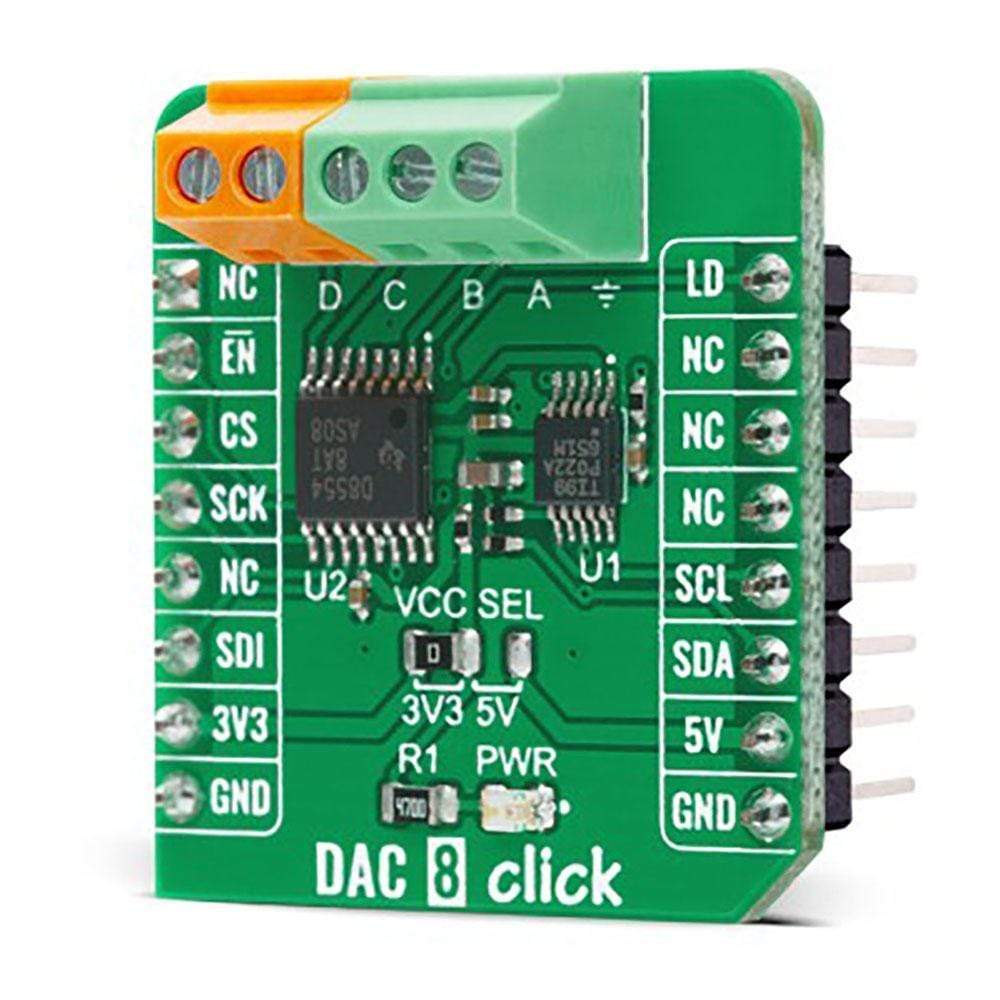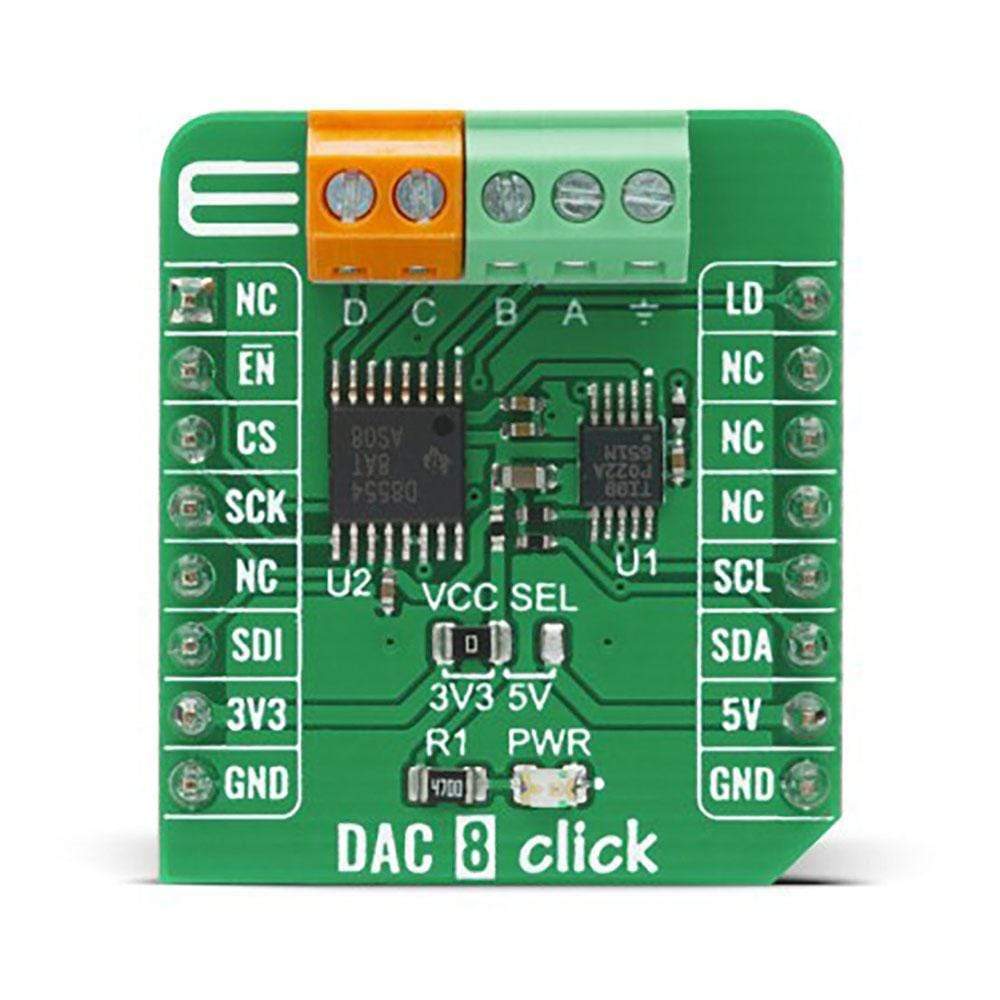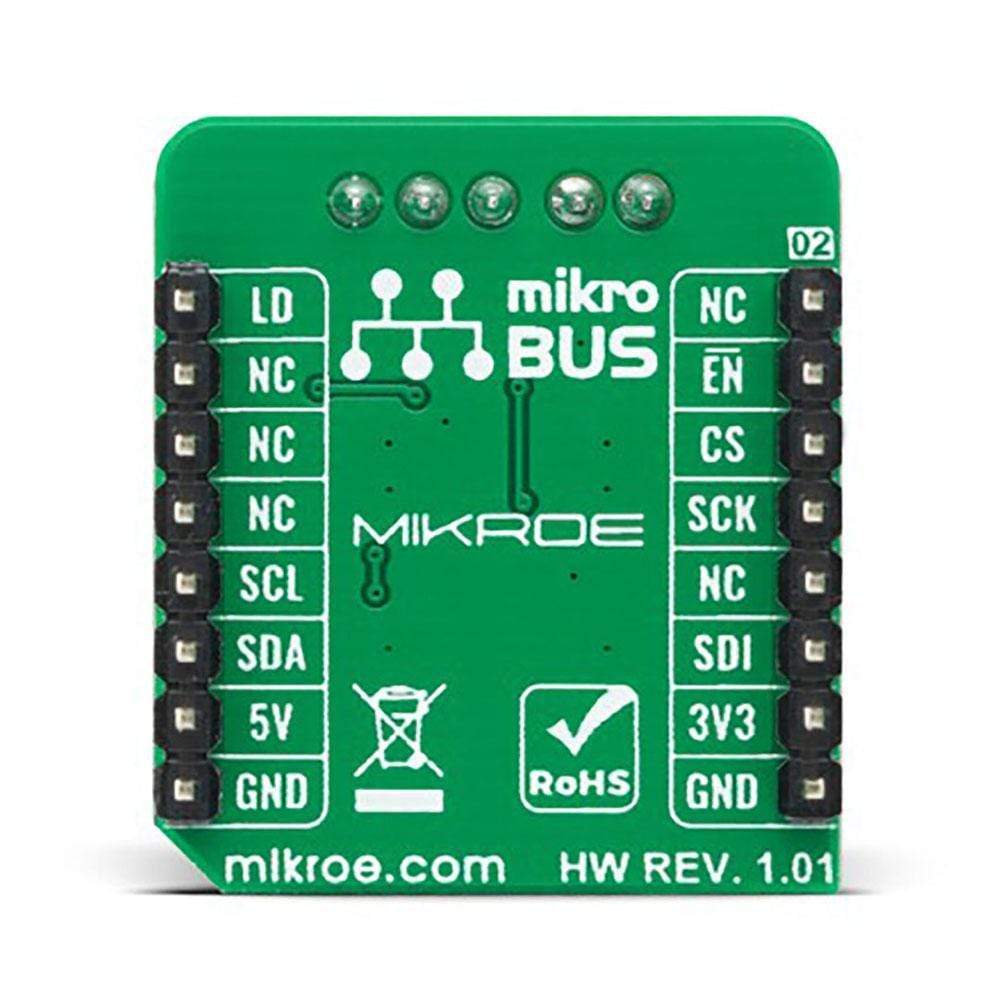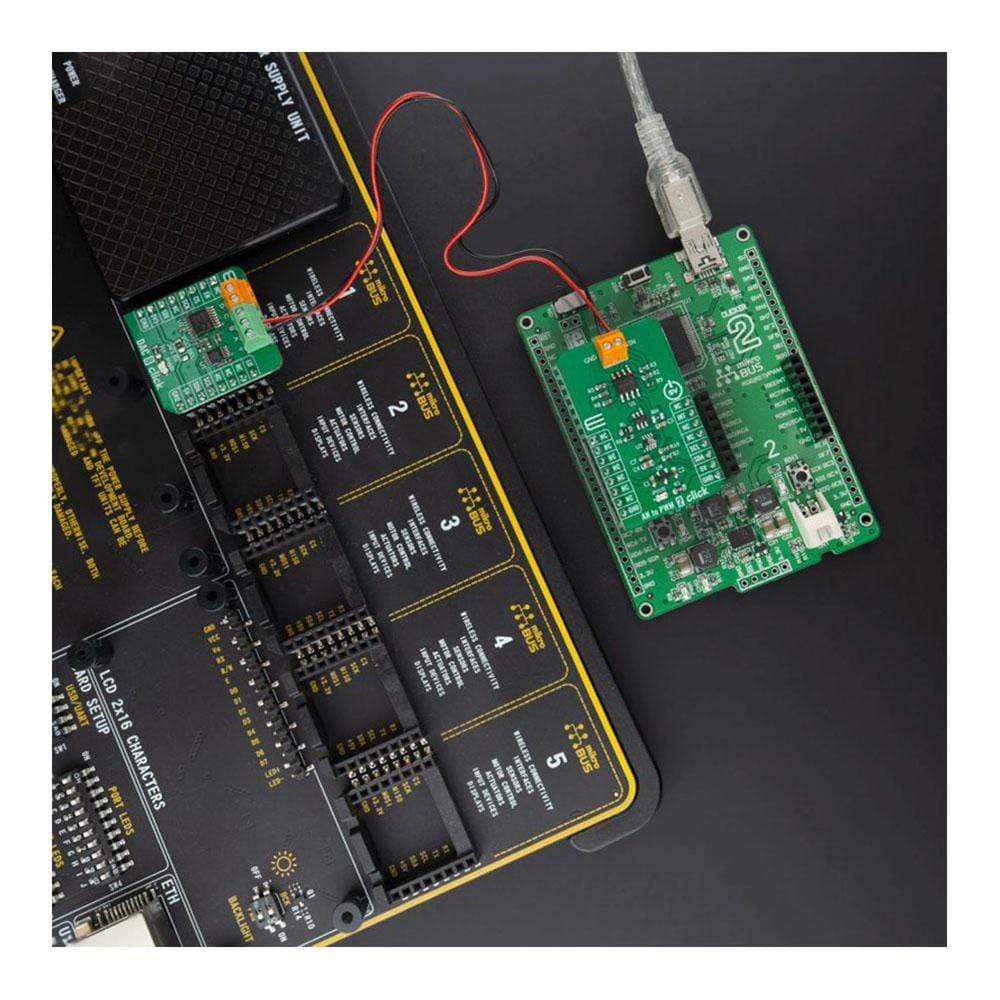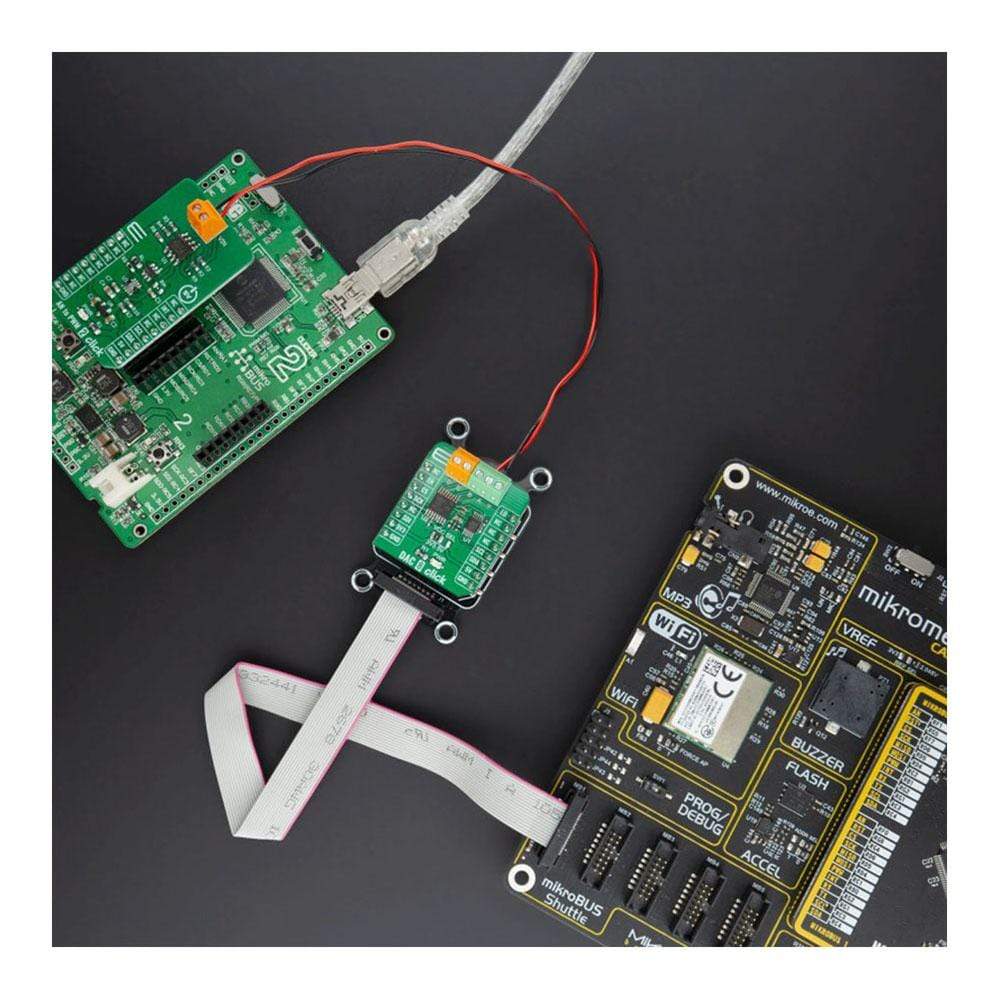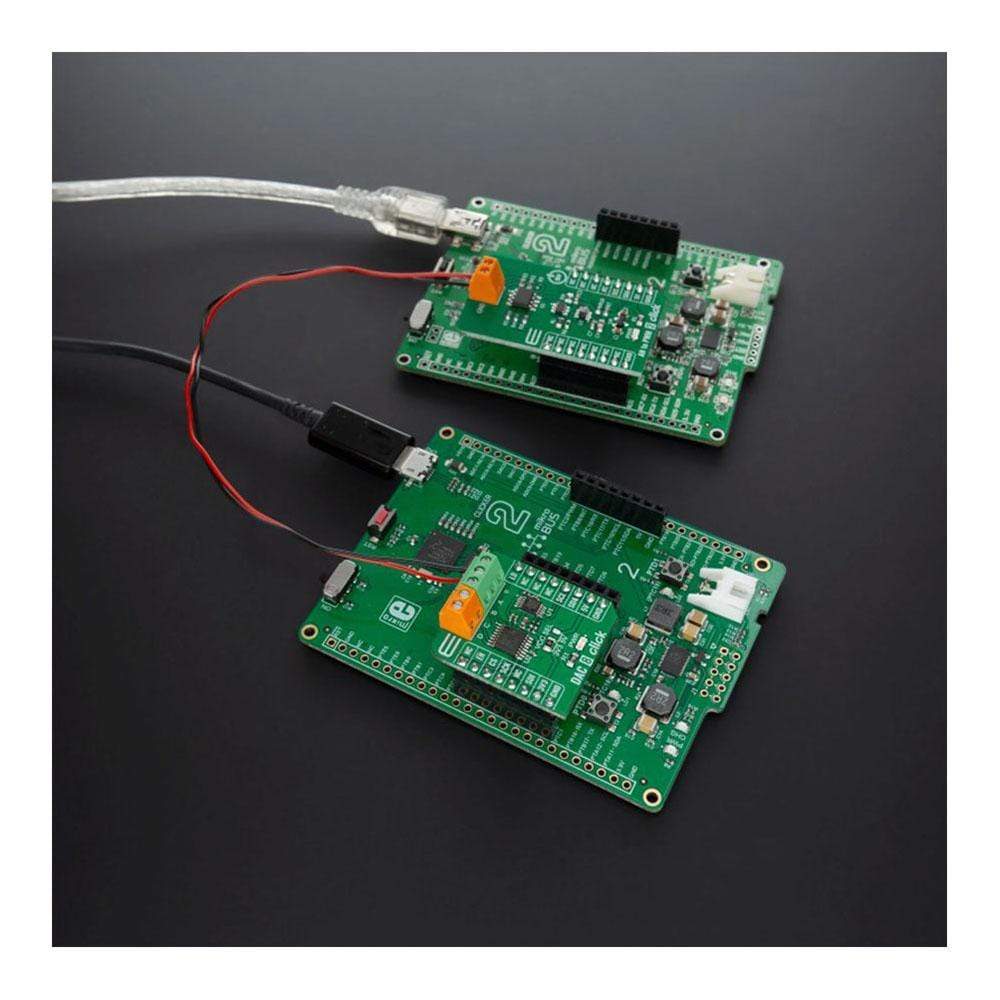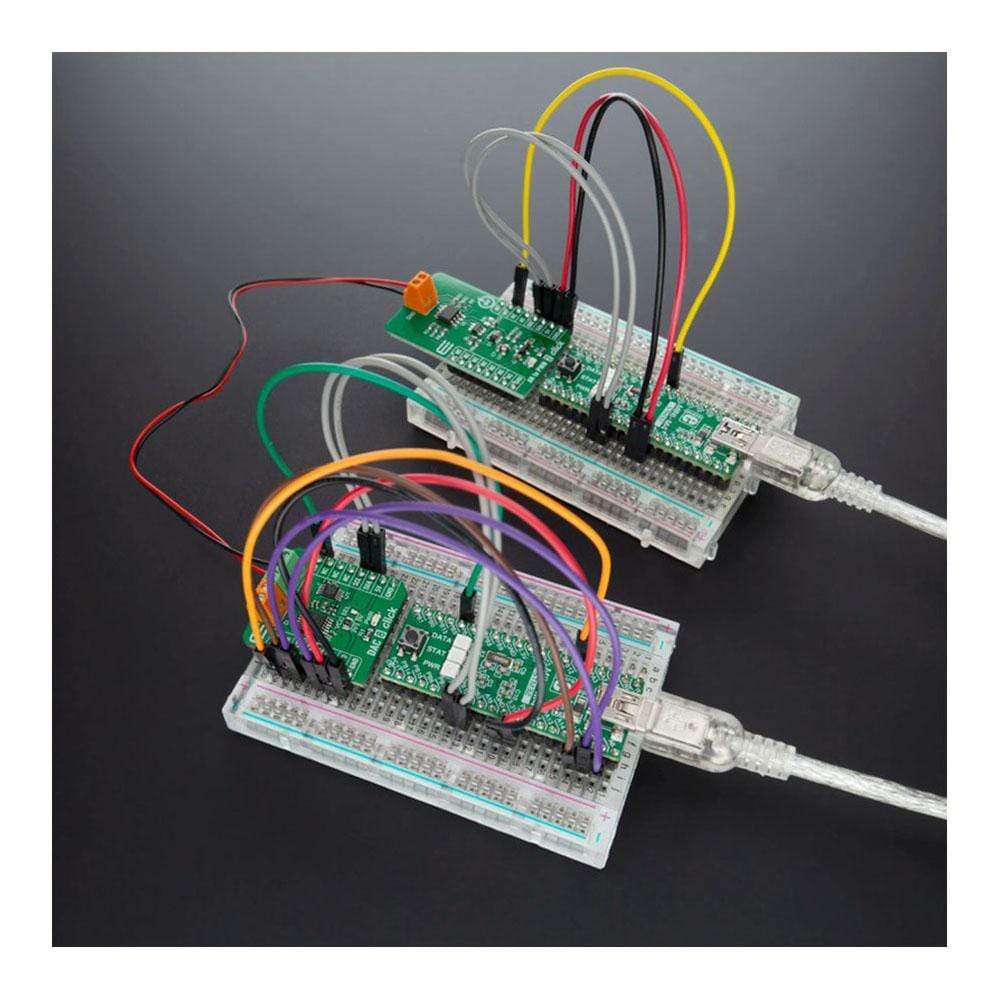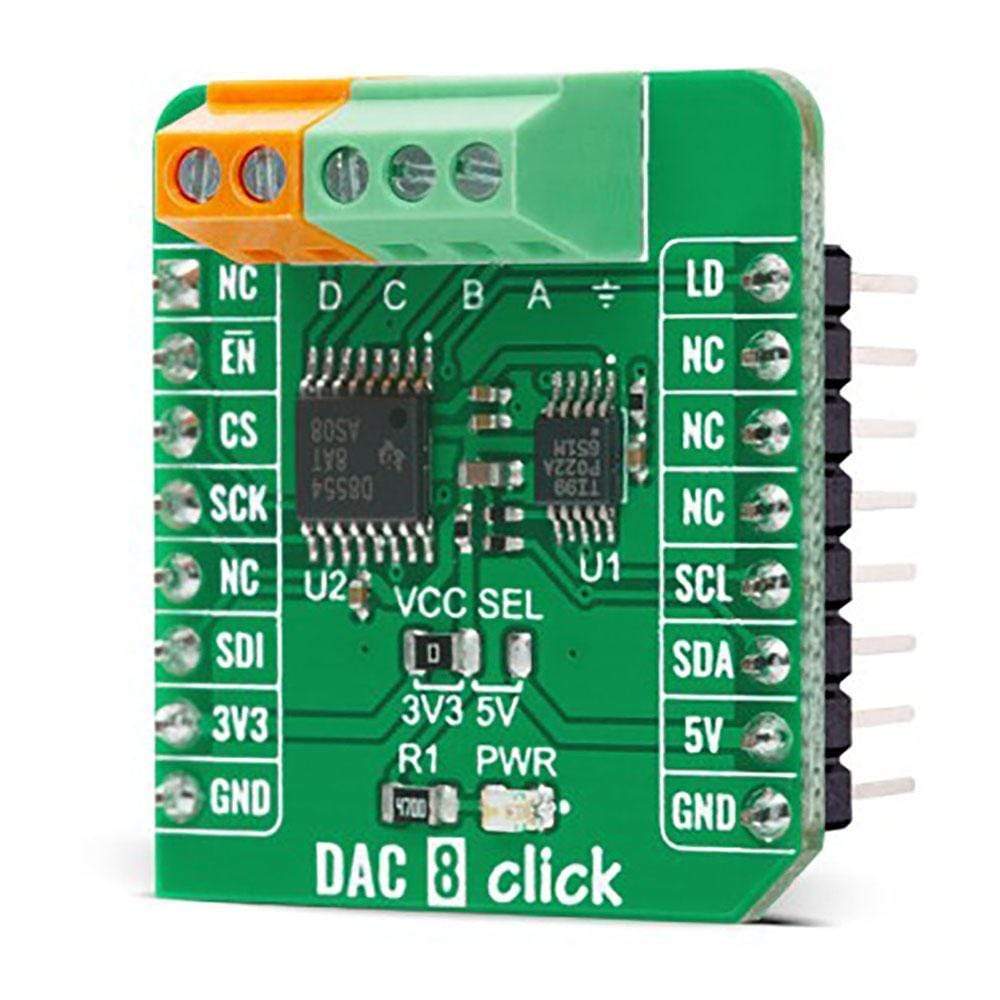
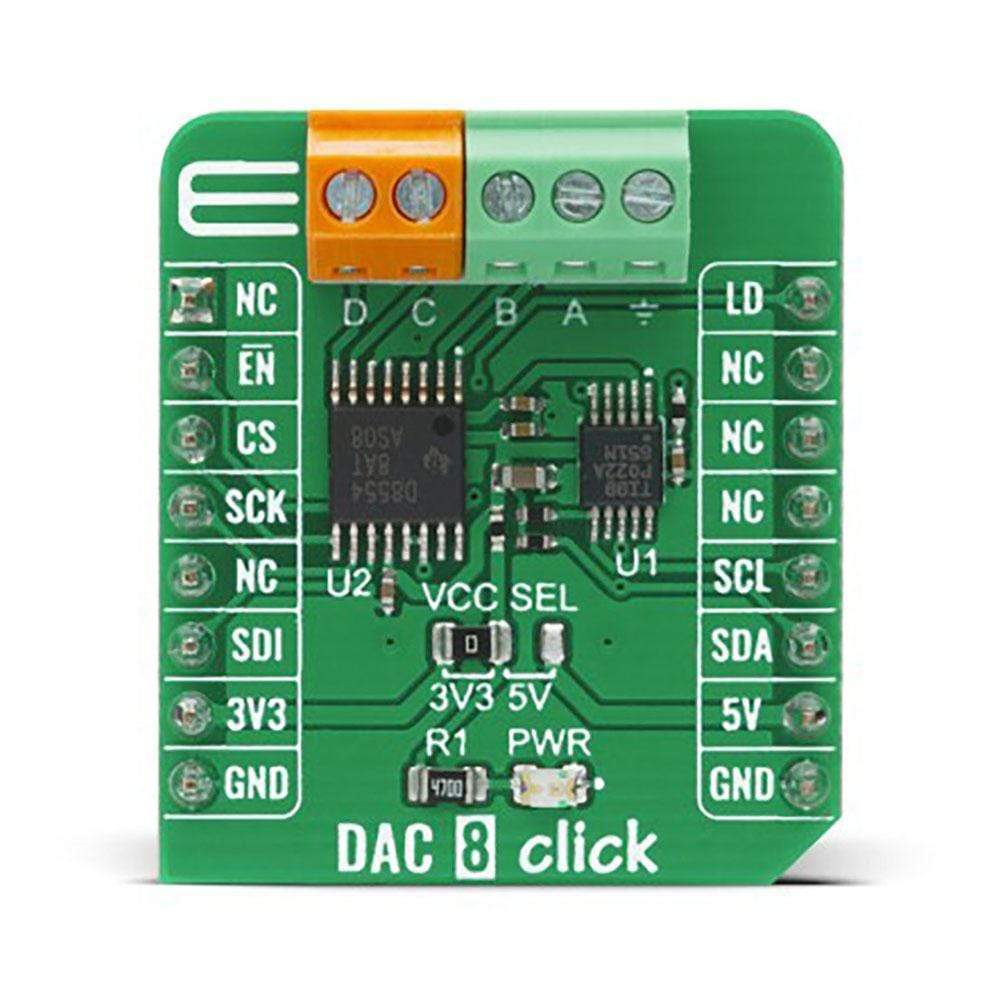
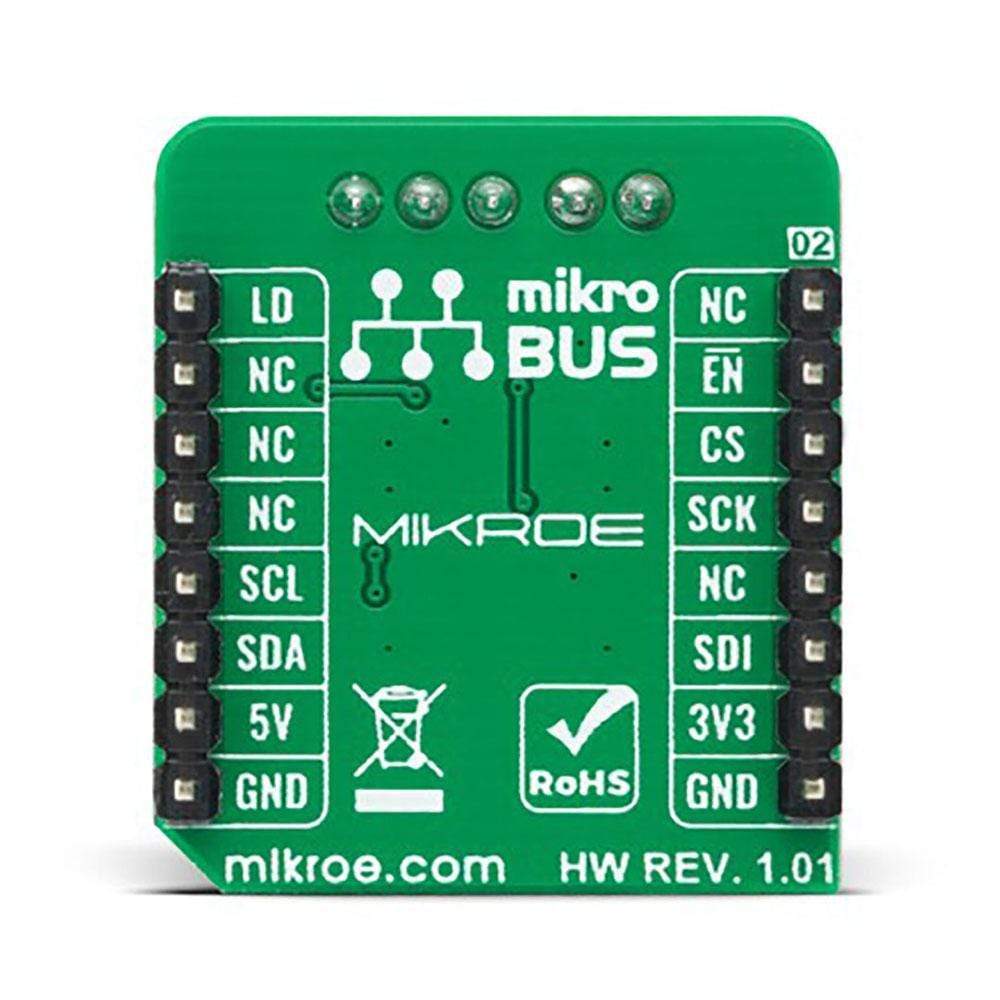
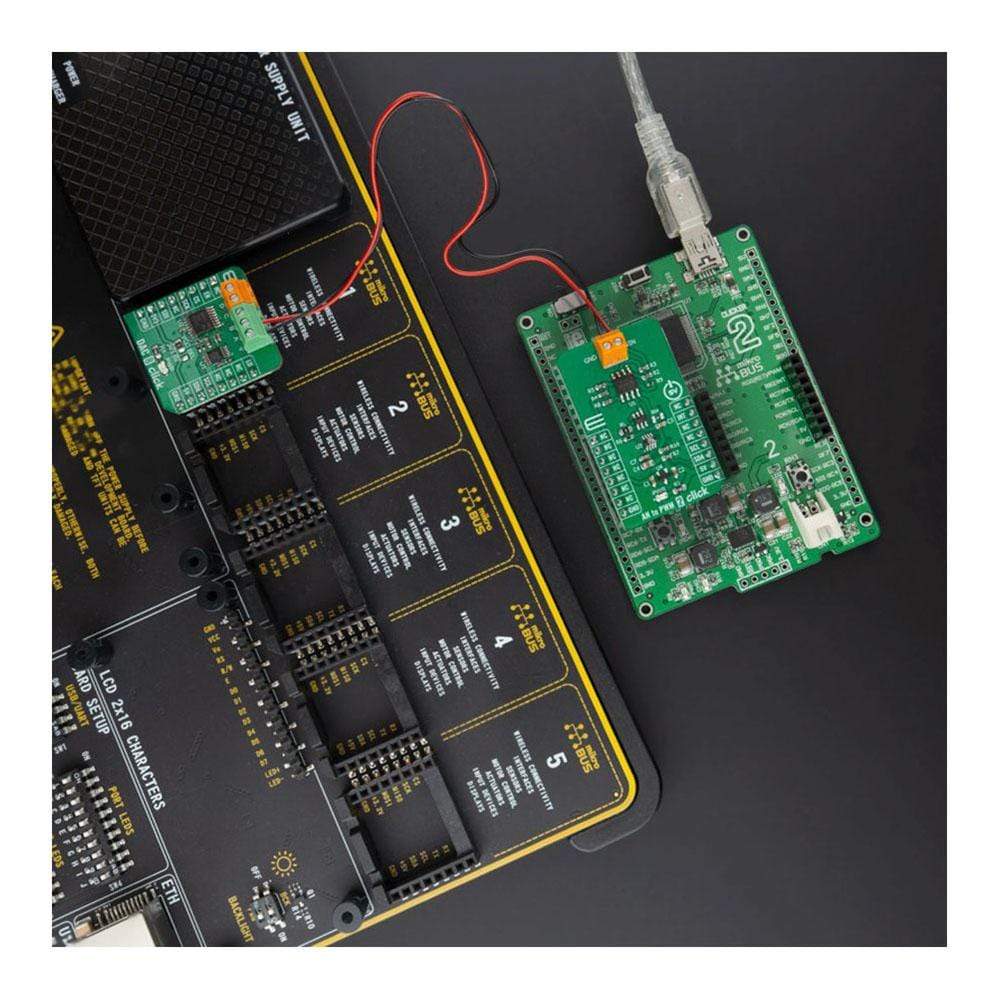
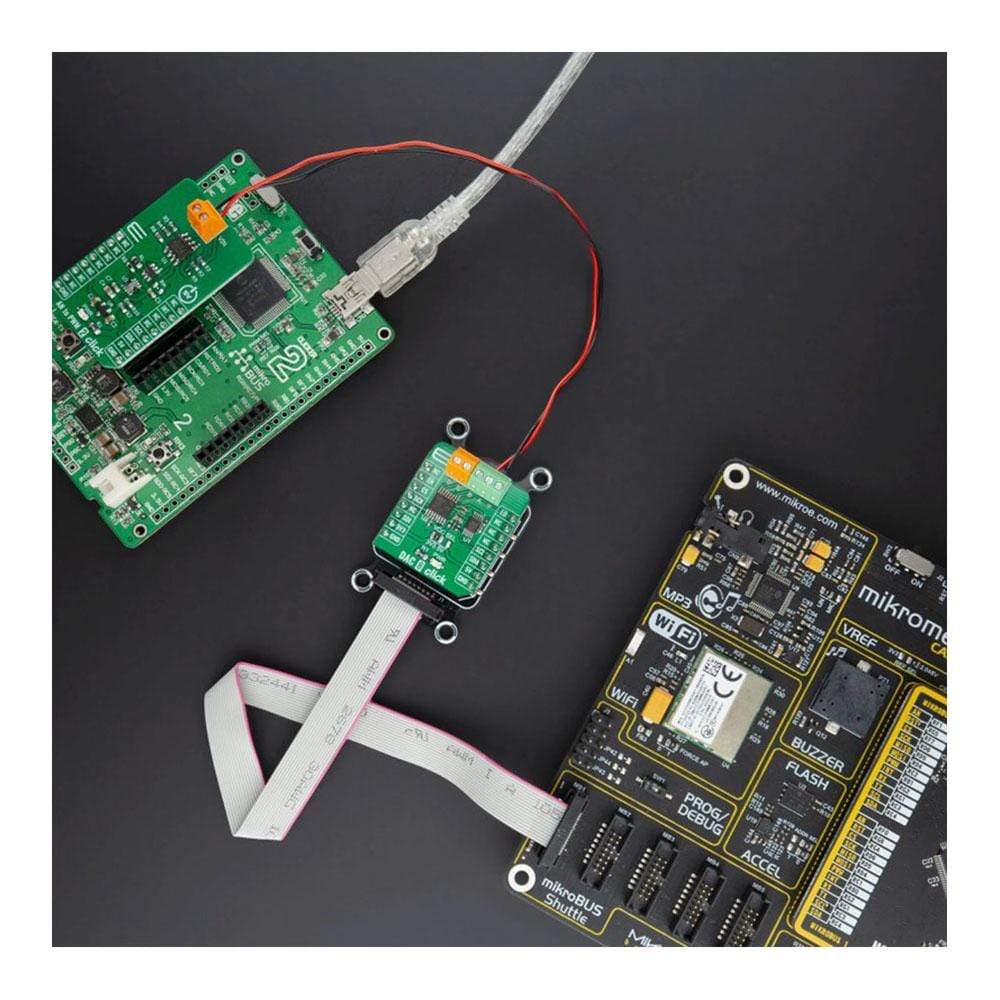
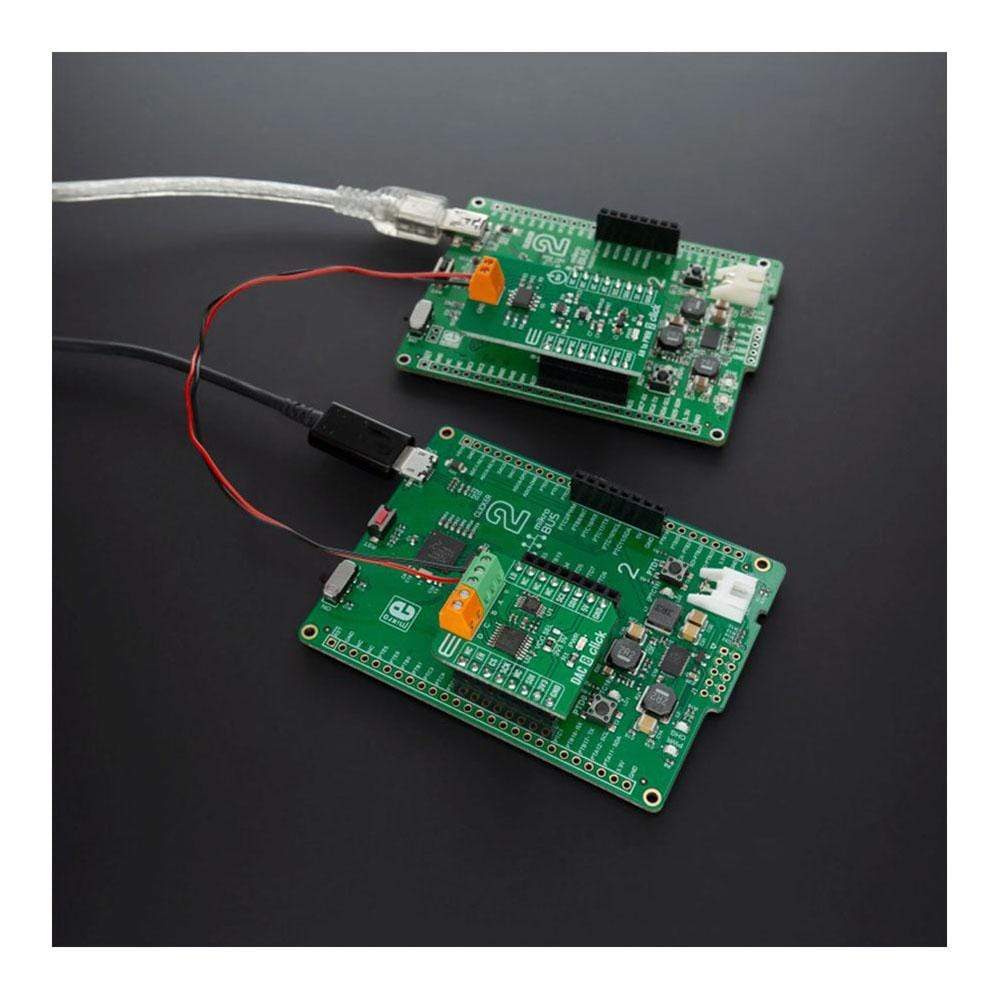
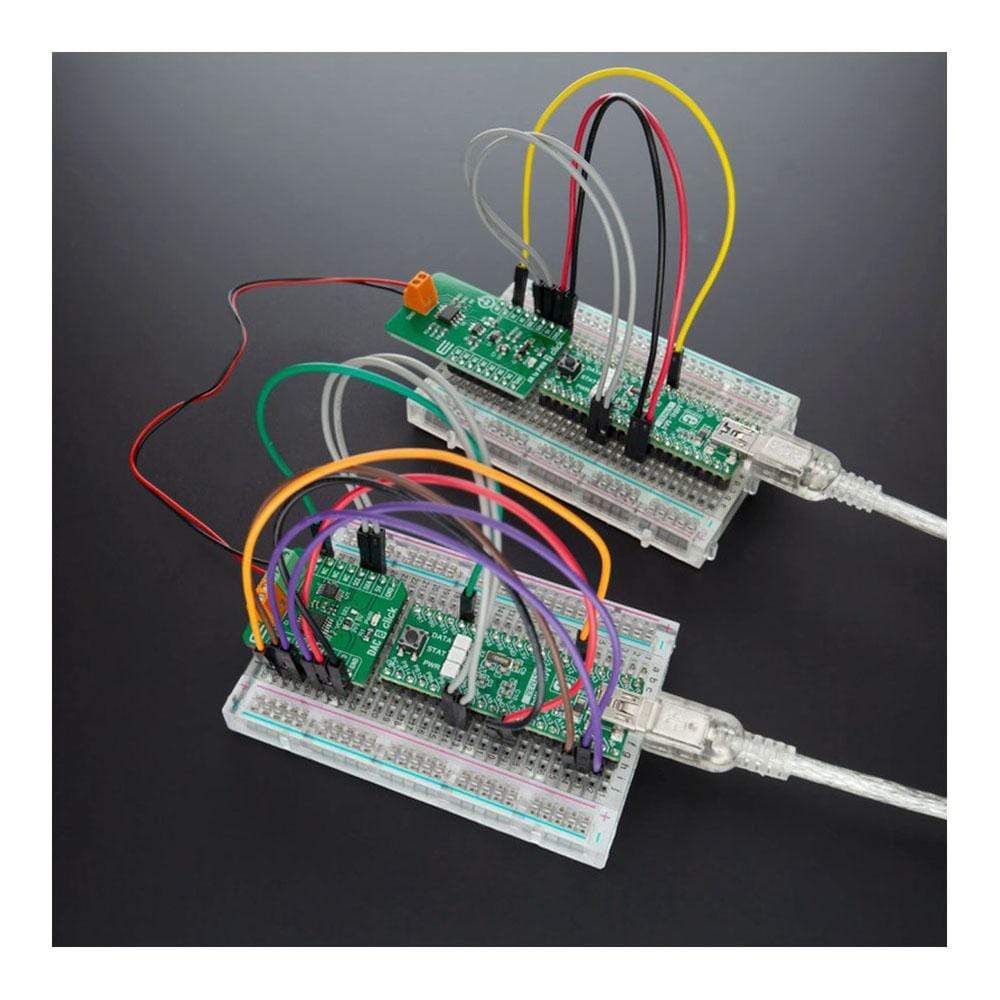
Key Features
Overview
The DAC 8 Click Board™ is a compact add-on board that contains a fully-featured, general-purpose voltage-output digital-to-analogue converter. This board features the DAC8554IPWR, a 16-bit QUAD channel voltage-output digital to analogue converter from Texas Instruments. It offers a low-power operation, good linearity, exceptionally low glitch, and supports a 3-wire SPI serial interface with a clock rate up to 50MHz. Requires an external reference voltage provided by I2C compatible DAC60501MDGSR to set the output range of each DAC channel. It has many features that make it attractive for various applications such as battery-operated equipment, digital gain and offset adjustment, programmable voltage and current sources, and many more.
The DAC 8 Click Board™ is supported by a mikroSDK compliant library, which includes functions that simplify software development. This Click Board™ comes as a fully tested product, ready to be used on a system equipped with the mikroBUS™ socket.
Downloads
Le DAC 8 Click Board™ est une carte complémentaire compacte qui contient un convertisseur numérique-analogique à sortie de tension polyvalent et complet. Cette carte comprend le DAC8554IPWR, un convertisseur numérique-analogique à sortie de tension QUAD 16 bits de Texas Instruments. Il offre un fonctionnement à faible consommation, une bonne linéarité, un glitch exceptionnellement faible et prend en charge une interface série SPI à 3 fils avec une fréquence d'horloge allant jusqu'à 50 MHz. Nécessite une tension de référence externe fournie par le DAC60501MDGSR compatible I2C pour définir la plage de sortie de chaque canal DAC. Il possède de nombreuses fonctionnalités qui le rendent attrayant pour diverses applications telles que les équipements alimentés par batterie, le réglage numérique du gain et du décalage, les sources de tension et de courant programmables, et bien d'autres encore.
Le DAC 8 Click Board™ est pris en charge par une bibliothèque compatible mikroSDK, qui comprend des fonctions qui simplifient le développement logiciel. Ce Click Board™ est un produit entièrement testé, prêt à être utilisé sur un système équipé du socket mikroBUS™.
| General Information | |
|---|---|
Part Number (SKU) |
MIKROE-4229
|
Manufacturer |
|
| Physical and Mechanical | |
Weight |
0.019 kg
|
| Other | |
Country of Origin |
|
HS Code Customs Tariff code
|
|
EAN |
8606027380082
|
Warranty |
|
Frequently Asked Questions
Have a Question?
Be the first to ask a question about this.

